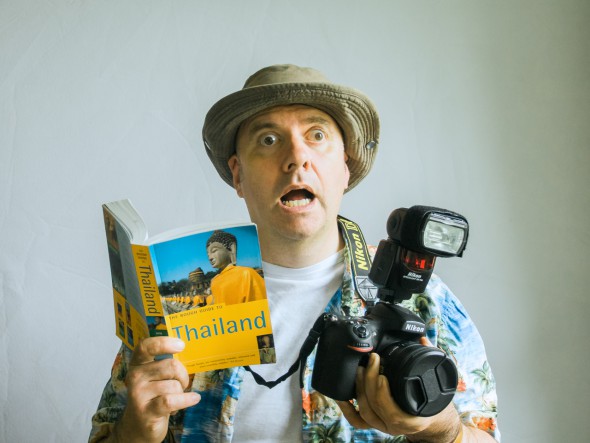Whether we’ve been taking pictures for 20 years or two months, we all have room for improvement.Geoff Harris has picked out five bad habits that could be holding us back.

Like any pursuit, hobby, vocation, profession – call it what you will – photography has its pitfalls. It’s easy to fall into bad habits; habits that could be sabotaging your creativity and productivity without you realising it. If there is nobody to point out your bad habits, it’s easy to reinforce them – practice makes perfect, right? With this in mind, I’ve dragged some of my bad habits, and those of other people, kicking and screaming into the light of day. It’s time to name and shame!
Impatience
The more images I take, the more I’ve realised that photography is a game of patience. Sure, you have to be in the right place and the right time, and on top of your gear, but then it’s about the waiting. Waiting for the right weather conditions or light. Waiting for a shy creature to appear from the undergrowth or a rare bird to land in a tree. Waiting for the decisive moment in a football match or street scene. Impulsive photographers who rush around often miss shots.
How many times have you missed something you could have caught if you’d hung around an extra five or ten minutes? One of landscape photographer David Clapp’s most memorable images, of a lighthouse against a dramatic red cloud in a storm, was taken when everyone else had gone back to the van. So try spending that bit longer in a place and reconcile yourself to the idea that you might not get anything – but you might get something really memorable. Better one great image from a day than 50 so-so ones.
Mindless composition
‘Mindless’ is an interesting word in this context – it’s more commonly used to describe yobs smashing up a bus shelter. By ‘mindless composition’ I mean not fully thinking through what you are doing before you press the shutter button. You need to be MINDFUL, which simply means being sure you are standing in the right place, keeping your tripod at the most appropriate height and angle, and checking that nothing untoward or distracting is creeping into frame.
So be hyper-vigilant for vans, traffic cones, rubbish bins, fire extinguishers and blokes in hi-vis jackets, as well as rookie errors like trees or poles emerging from people’s heads. What you see in the viewfinder is usually what you get, so to borrow a term from computing, rubbish in, rubbish out. Ask yourself this question before pressing the shutter button: am I sure all the elements are arranged as I wish, and there are no distractions getting in?
Chimping
I’ve written before about chimping – compulsively checking freshly taken images on your rear LCD. It’s a case of physician heal thyself, though – as I admit, my name is Geoff and I am a chimper. I shot a wedding fair at the weekend and watched myself doing it. In my defence, I’ve set up my image preview so the histogram (exposure graph) appears, and I tend to look at that more than the shot. All you are seeing is a low-res JPEG preview, anyway, even when you shoot in RAW, so chimping is often misleading.
A bigger problem with chimping is that it takes your attention away from your subject. This can be disastrous with portrait photography as it breaks that almost mystical bond that can develop between subject and photographer. When subjects see you chimping, they lose interest and maybe wonder if you know what you’re doing. I’d advise weaning yourself off chimping gradually, but you will need to go cold turkey at some point.
Crude flash
On-camera flash is a good friend but a dangerous enemy. While it’s OK for filling in shadows on sunny days, it can give a horrible, crude, ‘deer in headlights’ look when used indoors. Telltale signs include overexposed foregrounds and underexposed backgrounds, harsh shadows under the chin, and ‘custard pie’ lighting on faces without any shadows or nuance. Now, there are times you won’t have the time or inclination to lug around stands, softboxes or umbrellas, so try bouncing (angling) the flash off a pale or white-coloured wall or ceiling for nicer results. You’re dispersing the light, in other words, rather than hitting somebody in the face with it. Also, try using the pull-out bounce card in your flashgun, or invest in a separate card – I like the Honl Speed Gobo, which fits to your flashgun via a velcro strap. If funds permit, a hand-held constant LED light source like the Westcott Icelight 2 is a great way to get nicer lighting on indoor portraits, too.
Not seeking feedback
While there comes a point where you have to stop being precious and get your images out there, it’s also important that you pick up mentors and advisors along the way. Photography can feel like an intensely personal pursuit, but often we are too close to our images to spot our weaknesses. All great photographers have sought out, and received, such feedback. If you’ve not done so already, join a camera club or photography association, take advantage of portfolio reviews and appraisals at photography shows, and even approach photographers you admire for feedback. Be realistic – Testino or Don McCullin are unlikely to reply, but you will probably find that a well-regarded local photographer, or somebody working in a very specific niche, will be more amenable.
Do you agree with Geoff? Tell us what you think in the Comments section below.
About the Author
Geoff is an experienced photography journalist and recently stepped down as editor of Digital Camera, the UK’s best-selling photography magazine. He now writes for a range of publications. Geoff is a keen travel and portrait photographer, and a Licentiate of the Royal Photographic Society.

